What is a basswood for the bath and how it is used?
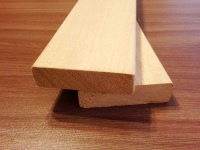
Abach for the bath is a rare and exotic variant of finishing, which allows you to fully reveal all the advantages of a real steam room. Interesting texture, high density and durability of the material make it really attractive for use in the construction of baths and saunas. Features of creating a shelf from African wood, a shelf in the steam room and other uses of the material is worth considering in more detail.
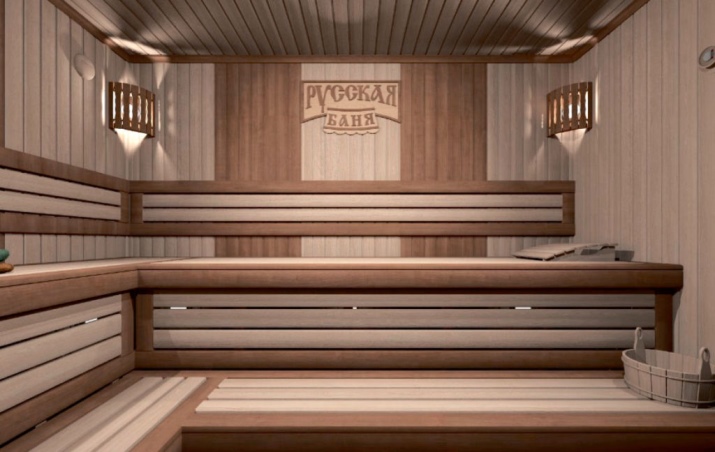
Characteristics
Abacha or abacha for the bath is increasingly offered in the form of battens and other lumber used in finishing the interior of the steam room. Exotic African wood is quite expensive compared to lime or aspen, but has significant advantages over them. The botanical name of the plant, trichlohyton hardtack, is often replaced by a more comprehensible version - "African maple". The tree grows in hot climates, reaches 35 m in height, and the trunk girth of adult specimens reaches up to 1.7 m.
The abach is a member of the mallow family and has distinctive carved leaves, resembling an open palm, like a maple. In African countries, its timber is highly valued because of the extreme density and strength of its fibers.
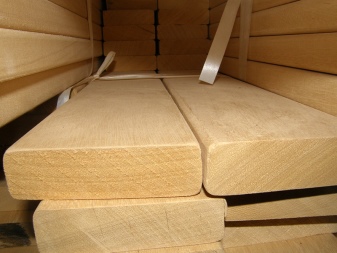
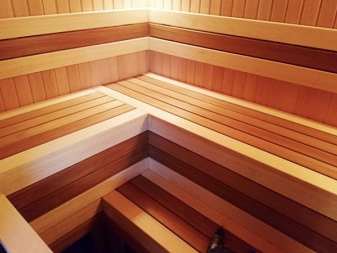
However, the characteristics of the abasi tree are really impressive.
- The density is from 340 to 475 kg/m3.
- Humidity reaches only 12%.
- Thermal conductivity and resin content are extremely low.
- The wood of the abash tree is light, the shade varies from creamy white to straw-yellow. The grain is poorly pronounced, and the border between the core and the sapwood is poorly visible. The fibers have a tangled-twisted appearance.
- Quick drying is very important when harvesting the abacha wood, as the trunk in the African climate is easily attacked by mold spores. The occurrence of the problem is evidenced by the formation of blue-gray and dark gray spots on the surface of the array. Freshly harvested wood has a characteristic odor that diminishes as it dries. Properly dried lumber is not afraid of exposure to moisture and contact with water.
- Abacha wood is suitable for sawing, cutting with any tool with a metal blade. It does not crack, keeps its shape without any signs of warping. It is important to consider that this type of wood is quite porous: its top layer is easily salted and prone to contamination. Periodically, products need sanding, which allows you to remove a thin film without damaging the product itself.
- Products made of abasi, is considered a high quality. It has a minimum number of defects, well maintains a given geometry, is beautiful.


These are the main characteristics of abacha wood used in baths and saunas.
The hardness of this material is not too high, so it is used with caution where this characteristic can seriously affect the performance of products.
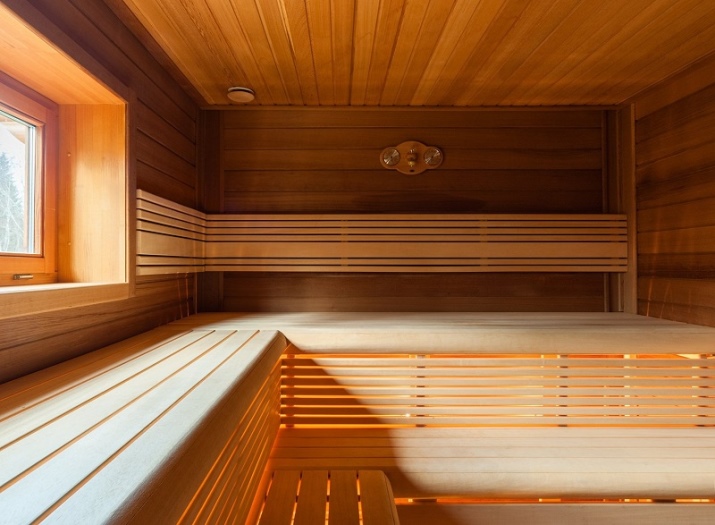
Advantages and disadvantages
Like other species of wood, abash has its pros and cons. The list of disadvantages can begin with the high cost and a large number of fakes on the market. Unscrupulous sellers try to pass off much less valuable types of wood as exotic African goods. In addition, because of its rarity, abash is often subjected to improper processing, which is also not good for it.
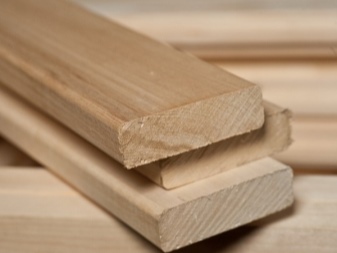

However, the advantages are much more.
- Excellent thermal insulation properties. Even when reaching the maximum temperature, it is almost impossible to get burned. Heat is accumulated inside the fibers, while the outer surface remains comfortable for tactile perception.
- Aesthetics. The beautiful pattern of natural wood gives the design of the room a special aesthetic, exclusivity.
- Phytotherapy. When the temperature increases in the steam room, you can feel the ethereal components emitted by the natural material, which can add spa effects to the overall usefulness of the procedure.
- No knots. The branches of the tree begin to grow at a considerable height, while the trunk is used to produce lumber. This allows you to get perfectly smooth and even boards that do not undergo a change in structure.
- Porosity. It makes the boards lighter, and the wood itself quickly acquires a comfortable temperature at the point of contact with the body.
- No cracks or chips. The material is not susceptible to splitting, which eliminates the risk of splinters or other damage.
- Durability. In spite of their peculiarities, finished products from abasi serve their owners for decades, without losing their initial characteristics.
- Lack of shrinkage and deformation. You can safely use the bath immediately after the creation of the finish, without fearing that the interior will suffer from temperature fluctuations.
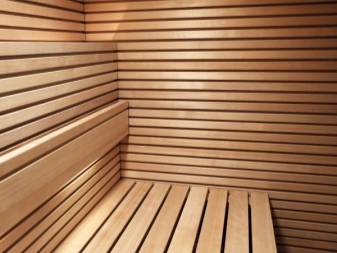
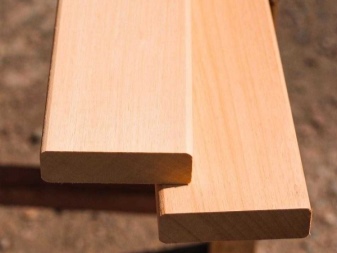
Despite the fact that abasi wood is considered exclusive, in Europe it is actively used for the full finish of the sauna. Of course, to create the floor requires thicker timber (from 30 to 50 mm), which allows to achieve an even distribution of loads. But such flooring has a significant advantage in the form of good grip with the surface of the sole.
Even after contact with water, the floor does not become slippery.
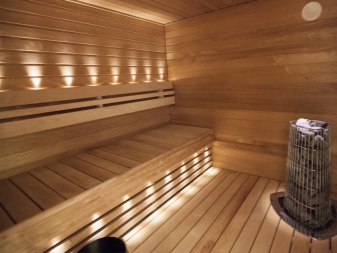
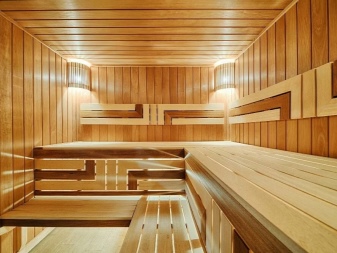
Recommendations for use
Abasi wood has earned high marks from professionals and lovers of light steam. This material is really suitable for use in conditions of high temperature or humidity, it can be used to make a canopy or shelf. A steam room with this finish keeps heat better, does not cool down longer, requires less fuel to maintain the desired temperature regime. Features of the use of this wood in different conditions is worth considering in more detail.
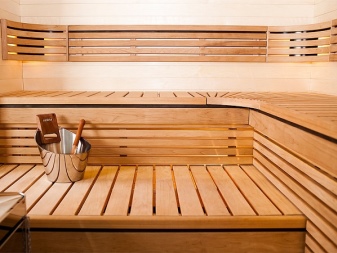
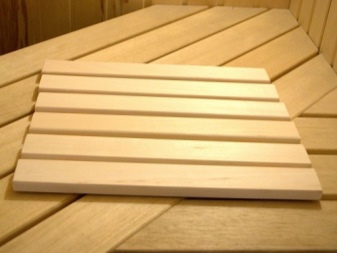
Basic tips
When using linings and other lumber from abasi in the finishing of baths and saunas, it is necessary to observe a number of rules.
- When choosing compositions for processing, give preference to light impregnations that do not penetrate deep into the structure. Oil-based varieties that increase density and thermal conductivity will not work, as they will radically change the natural characteristics of wood.
- In the interior of the steam room, it is better to use heat-treated battens, which have a distinctive color, darker than the classic options. This will increase the mechanical and biological resistance of the material.
- When performing installation work it is necessary to use protective gloves. This will not stain the surface of the untreated board, preserve its beautiful color and texture.
- During operation, due to the evaporation of moisture on the surface of products made of abasi wood there are characteristic dark spots. You can remove them by simply scrubbing with a brush. At the end of bathing procedures, the room must be ventilated and dried. This will prevent the formation of mold, fungus.
Observing these requirements, you can ensure long-term preservation of the external attractiveness of the material, excluding its premature deterioration under the influence of external factors.
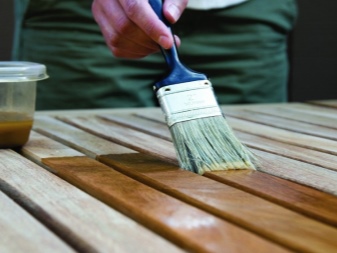
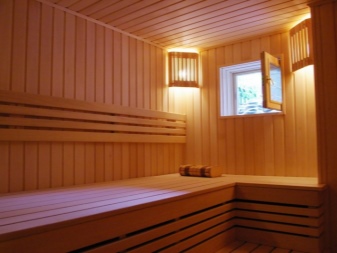
Finishing and design elements
The rarity and beauty, as well as the performance properties of abasi wood in the 70s of XX century attracted the attention of the Finns, who knew a lot about the hot and dry steam baths. It was in saunas that the best properties of the exotic material were fully disclosed. Later it began to be used in Russian baths, where other parameters of humidity and temperature are spread. Today, abasi wood is used both for interior decoration in rooms designed for recreation, and in the steam room.
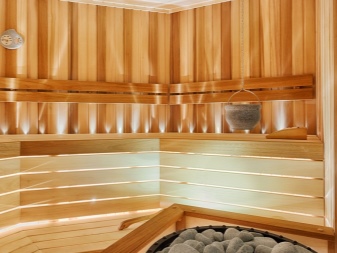
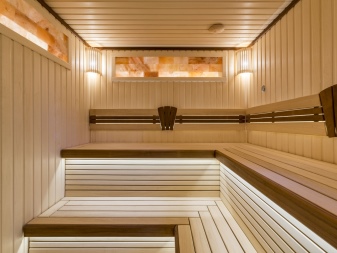
Shelf
The main element of any bath is the shelf, on which people who visit the steam room are placed. It is made of planks, and not of linings, as the paneling of the walls or the canopy. For this bathing element is characterized by the following dimensions:
- length - 1,5-1,8 m;
- Width - 0.4-1.5 m;
- Height from the floor - 0.2 m;
- Distance from the ceiling - 1-1.2 m.
The shelves always make a multilevel. From one tier to another maintain a distance of 0,4-0,6 m. Depending on the size of the steam room make such levels from 2 to 4. Each shelf consists of a frame, for which take a bar of size 50x70 mm. From it form a vertical and horizontal strapping with the distance between the posts in 0,5-0,6 m.
For the flooring of benches thinner boards are used, a thickness of 20 mm is enough. They are attached to the created frame with a small gap. For the outflow of water in the steam room, the entire structure is placed with a slight slope of 1-2 degrees from the horizontal plane. Classic fixing elements involves the installation of wooden wedges, when using self-tapping screws, they must be recessed into the solid wood by 0.5 cm to avoid burns.
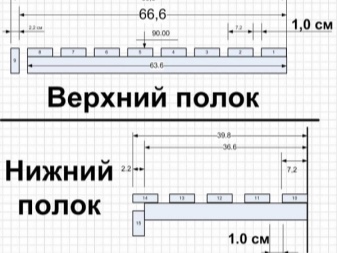
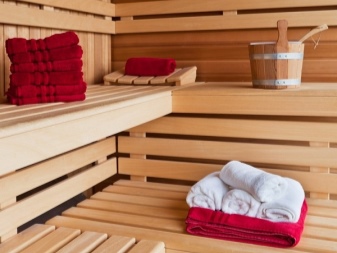
Other options
Among the areas of application, in which the wood abash in the bath really turns out to be better than other materials, we can note the following.
- Interior finishes for saunas. Canopies and other surfaces are exposed to intense heat when the temperature rises to +100 degrees. Here, wood with low thermal conductivity will ensure that you can stay comfortable inside the sauna. You will be able to touch the walls and other surfaces without fear of getting a thermal burn.
- Finishing the floor in the pre-bath and steam room. If there are children, elderly people in the premises, the non-slip surface of abasi wood will help to avoid injury. In addition, on such a floor will not be chipped, potentially dangerous splintering or other injuries. With properly organized ventilation boards of abasi are suitable for decorating the bathing rooms, the space near the heater.
- Facing the walls in the bath. With the help of battens it is possible to create an atmosphere of coziness and warmth. Abasi looks much more interesting and noble than lime, larch. Humid environment will not harm the material, if properly ventilated, pay attention to maintaining the right microclimate.
Abasi wood is categorically not suitable for cladding a hammam. In such a bath it is better to use heat-treated material, which can more effectively resist the effects of pathogens.
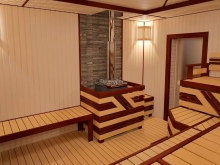
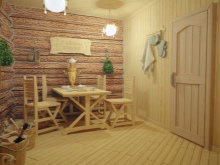
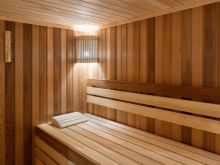
Examples
A good example of the use of abasi in the design of the interior of the bath. The shelves and walls have the necessary ventilation gaps, look harmonious and attractive.

Cozy space with an exotic finish. The multi-tiered steam room looks especially interesting due to the use of tinted and ordinary wood. This emphasizes the unusual structure, the pattern of the boards, while not depriving the bath of its traditional charm.

A review of the bath felling for the abacha in the video below.




